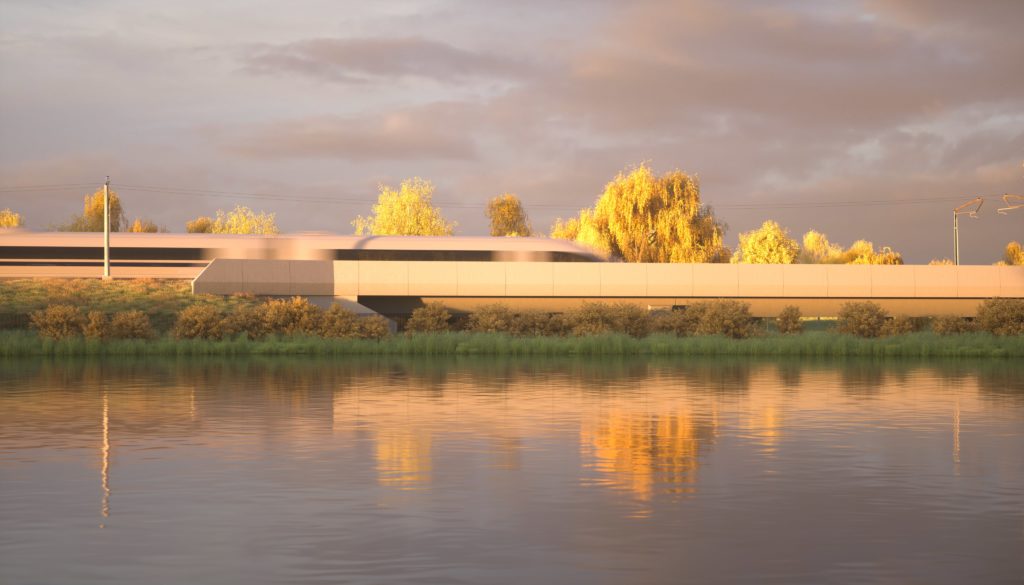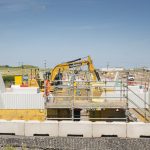Sector - Modular
HS2 designs lego-viaduct

Final designs have been revealed by HS2 for the Thame Valley Viaduct which will use pioneering modular construction methods to slot the bridge together like a giant Lego set.
Designs for the Thame Valley Viaduct will not only use prefabricated construction to speed up installation of the viaduct, but will also cut its carbon footprint by an estimated 66%.
Spanish lessons
Applying lessons from recent high speed rail projects in Spain, the design team cut the amount of embedded carbon by simplifying the structure of the viaduct so that every major element can be made off site.
In a major step forward for viaduct design in the UK, the team opted for two wide ‘box girder’ beams per span instead of eight smaller beams – to simplify and speed up assembly.
Thame Valley is one of 15 viaducts designed by HS2 Ltd’s main works contractor, EKFB – a team made up of Eiffage, Kier, Ferrovial Construction and BAM Nuttall – working with their design partner, ASC (a joint venture between Arcadis Setec and COWI) and specialist architects Moxon.

Cutting carbon
The production of steel and concrete is a major contributor to carbon emissions, with the new lighter-weight structure expected to save 19,000 tonnes of embedded carbon in comparison to the previous design.
As well as cutting embedded carbon in terms of materials, this approach requires less lorries to deliver material to site, cuts waste and will reduce disruption for the community during construction.
Offsite construction
In an unusual move, the 35 concrete piers that support the viaduct will also be entirely made off site before being placed on their foundations – meaning that every major element of the structure will be pre-fabricated.
Traditionally, viaduct beams are secured together above each of the piers with a concrete diaphragm which is cast in situ. The larger pre-cast beams that will be used at Thame Valley can secured directly to one another, removing the need for the diaphragm, improving durability and reliability, saving time, cutting cost and improving safety by reducing the need for people to work at height.
EKFBs Technical Director, Janice McKenna said: “Cutting carbon during construction is a priority for EKFB as the team commences the building works of some of the main structures along its 80km section of HS2, and this process starts right at the initial design stages.
“Working alongside our design partners, we have tackled the carbon challenge from two angles. The structurally efficient solution means we minimise the embedded carbon in the viaduct materials; and we have also been able to reduce emissions during construction by maximising off-site pre-fabrication to achieve an efficient build, as well as reducing the number of HGVs on local roads. The techniques used in the Thame Valley Viaduct are also being used in other structures along our line of route.”
Around the viaduct, the river floodplain will be enhanced to boost biodiversity and help better manage flood water. This will include replacing existing arable land with new wildlife-rich areas of woodland and wetland.
If you would like to read more stories like this, then please click here
Related Articles
More Modular News
- BSI publishes groundbreaking standard for MMC in residential developments
28 May 25
New specification to build confidence in modern methods of construction (MMC) for residential developments has
- Wellbeing sacrificed for profit
23 Oct 24
A new report by the APM calls for greater strategic leadership to improve employee wellbeing
- Why Modular Construction in the Commercial Sector Stacks Up
15 Apr 24
Richard Hipkiss, Development Director of the MPBA, considers why the outlook in mature commercial markets






